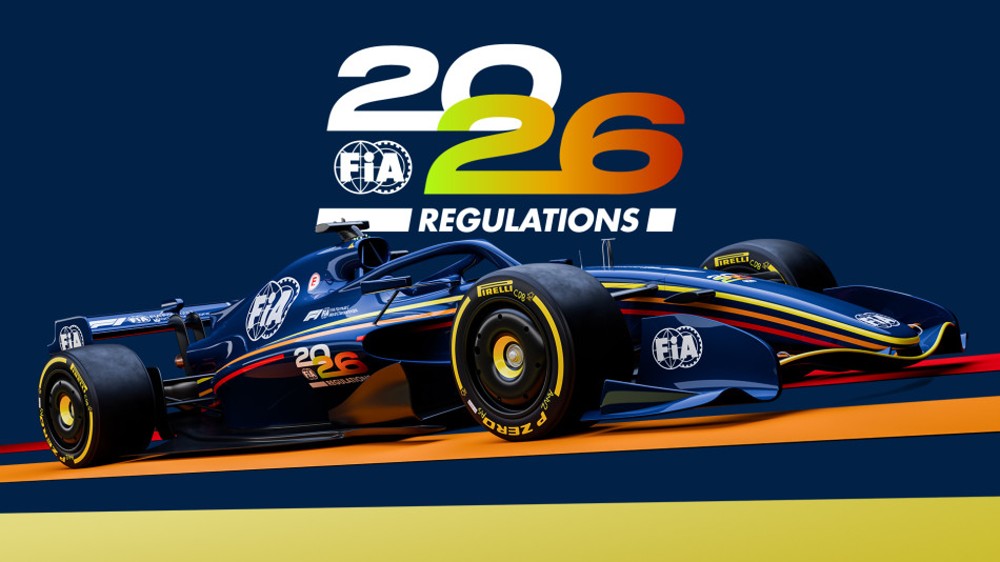F1 News: FIA adds 40 days of Mule car testing in 2025 for 2026
The FIA has confirmed a number of changes that have been written into the rule books for the remainder of the 2024 championship, as well as one key change in the 2025 regulations regarding expanded Mule car testing ahead of the 2026 major rules changes.
–by Mark Cipolloni–
Following meetings of the F1 Commission recently, the FIA has written into the rule books a number of changes that have received approval from the World Motor Sport Council to be ratified.
Mule car changes in 2025 for 2026 car development
The FIA has changed its sporting regulations for next year, allowing for 40 days (plus 10 days for 2024) of mule car testing in 2025 organized by the FIA ahead of Formula 1’s new era in 2026.
Before Wednesday [31 July], there was no provision for the testing of mule cars in the 2024 sporting regulations.
New power unit rules come into force in 2026, with an associated change in the aerodynamics of the cars. The 10 F1 teams will be allowed to run mule cars (10 days in 2024 and 40 days in 2025) to ensure they do not go into the 2026 season on the back foot.
Mule cars are not unusual to F1 as they have been seen in the past to help with development ahead of an upcoming rule change. The car is modified from that year’s specification to help assess the effects likely to be imposed with the new rules.
The FIA has outlined its Testing of Mule Cars (TMC) in the Sporting Regulations, with Article 10.10 defining mule cars as being those designed and constructed to the current technical regulations or those of the previous four calendar years prior to the current calendar year, albeit suitably modified for providing the FIA with a means to test components or systems for future regulations. That is for 2024, but in 2025 it is expected that more leniency will be allowed to mimic the radical new 2026 cars, which current cars cannot do.
A defined mule car can also be modified for the purpose of supplying Pirelli with a means of track testing its future tires. A mule car must be limited to the minimal number of modifications required for these purposes, with the remainder of the newly-added regulations merely administrative – sharing its rules with existing programs such as the Testing of Current Cars (TCC) or the Testing of Previous Cars (TPC).
An example of this includes provisions to ensure the mule cars only run with components and setups that have already been used at a Grand Prix, in order to ensure teams can’t use the outing for development purposes – exceptions to this can only be made by the FIA, and will only be permitted based on the new components being directly related to the new systems under evaluation.
10 days of mule car testing will be permitted between January 1st and December 31st, with drivers eligible to take part in these runs provided they are qualified for a full F1 super license.
Change to cars that cause red or yellow flags
The FIA has issued revisions to the Formula 1 Sporting Regulations in response to incidents involving Fernando Alonso and Carlos Sainz at April’s Chinese Grand Prix.
The first change comes in response to Alonso’s penalty during the China Sprint, issue for causing a collision with Sainz during the short-race format.
Alonso was handed a 10-second time penalty, which had no effect given the Spaniard retired from the Sprint.
As it was a Sprint, Alonso’s penalty couldn’t be converted to a grid drop, as would usually be the case in a GP format, but the FIA has altered the regulations to allow this.
“If any of [above] penalties above are imposed upon a driver, and that driver is unable to serve the penalty due to being unclassified in the sprint session or the race in the case of a) or b) or due to retirement from the sprint session or the race in the case of c) or d), the stewards may impose a grid place penalty on the driver at their next race,” a new clause in the regulations reads.
Other regulation changes include the tightening of wording relating to a car breakdown – rather than saying a car breaking down “on track” can’t continue in a session, the wording has changed to a car that breaks down “in any area other than the pitlane and receives physical assistance”.
If a driver can’t serve their penalties due to retirement, they can be given a grid penalty for their next race.
F1 cars are not permitted to enter the pitlane during a Safety Car period, unless it is for the purpose of changing tires.
A particularly minor rule change is that drivers are now expected at the front of the grid for the National Anthem procedure 16 minutes ahead of the race, instead of 14.
Closing a loophole on brakes
An surprise change made on the technical side has been to Article 11.1.2, related to braking systems.
“The brake system must be designed so that within each circuit, the forces applied to the brake pads are the same magnitude and act as opposing pairs on a given brake disc,” says the unchanged text before the new wording is confirmed with the following sentence: “Any system or mechanism which can produce systematically or intentionally, asymmetric braking torques for a given axle is forbidden.”
This tightening of the wording doesn’t suggest a team has already engaged such a system, but the governing body has spotted a potential loophole in the wording of the regulation.
This may have been due to an audit of its own rules, or could have been pointed out by a team that may have spotted a gray area in the regulations and sought clarification.
